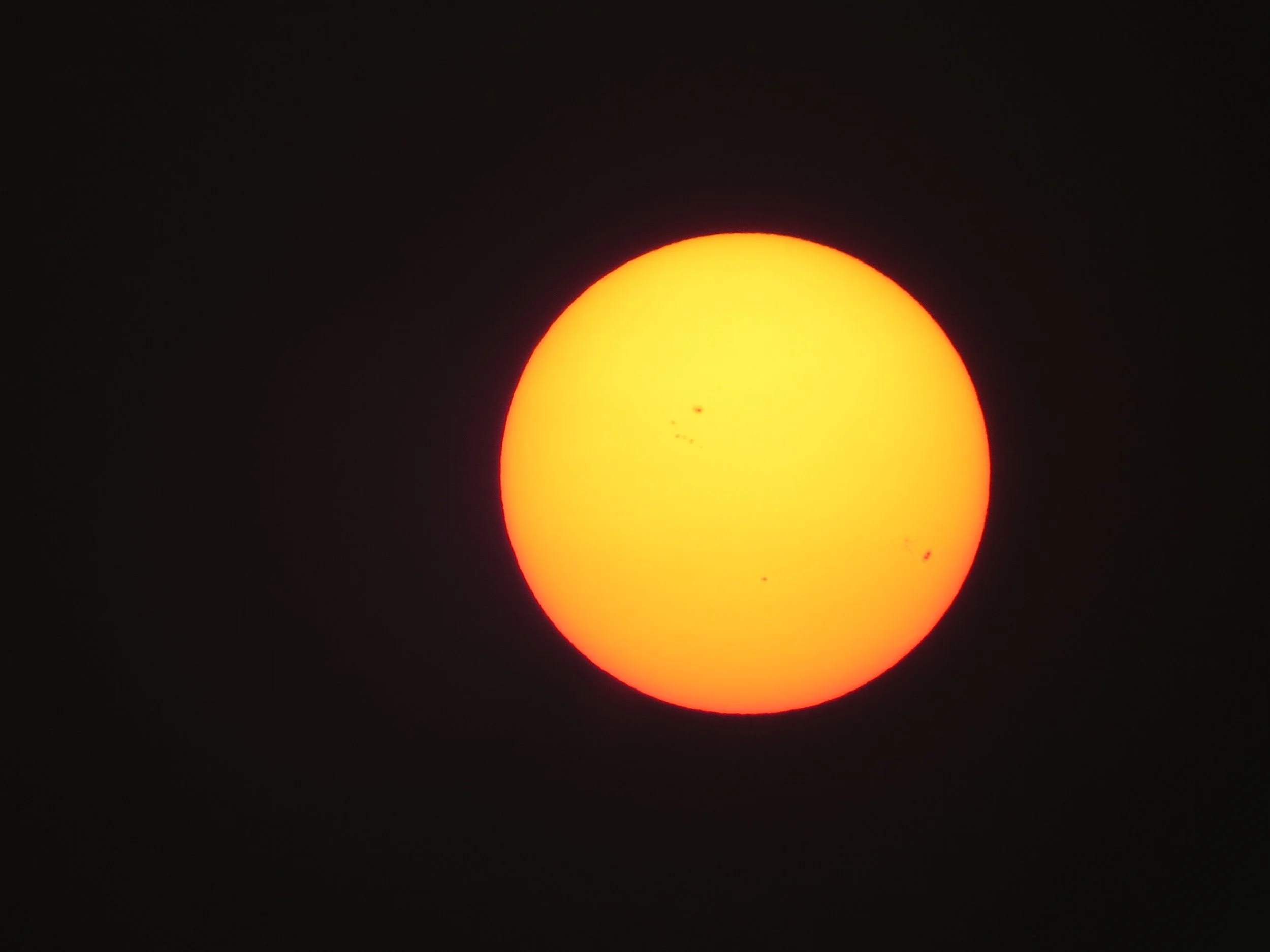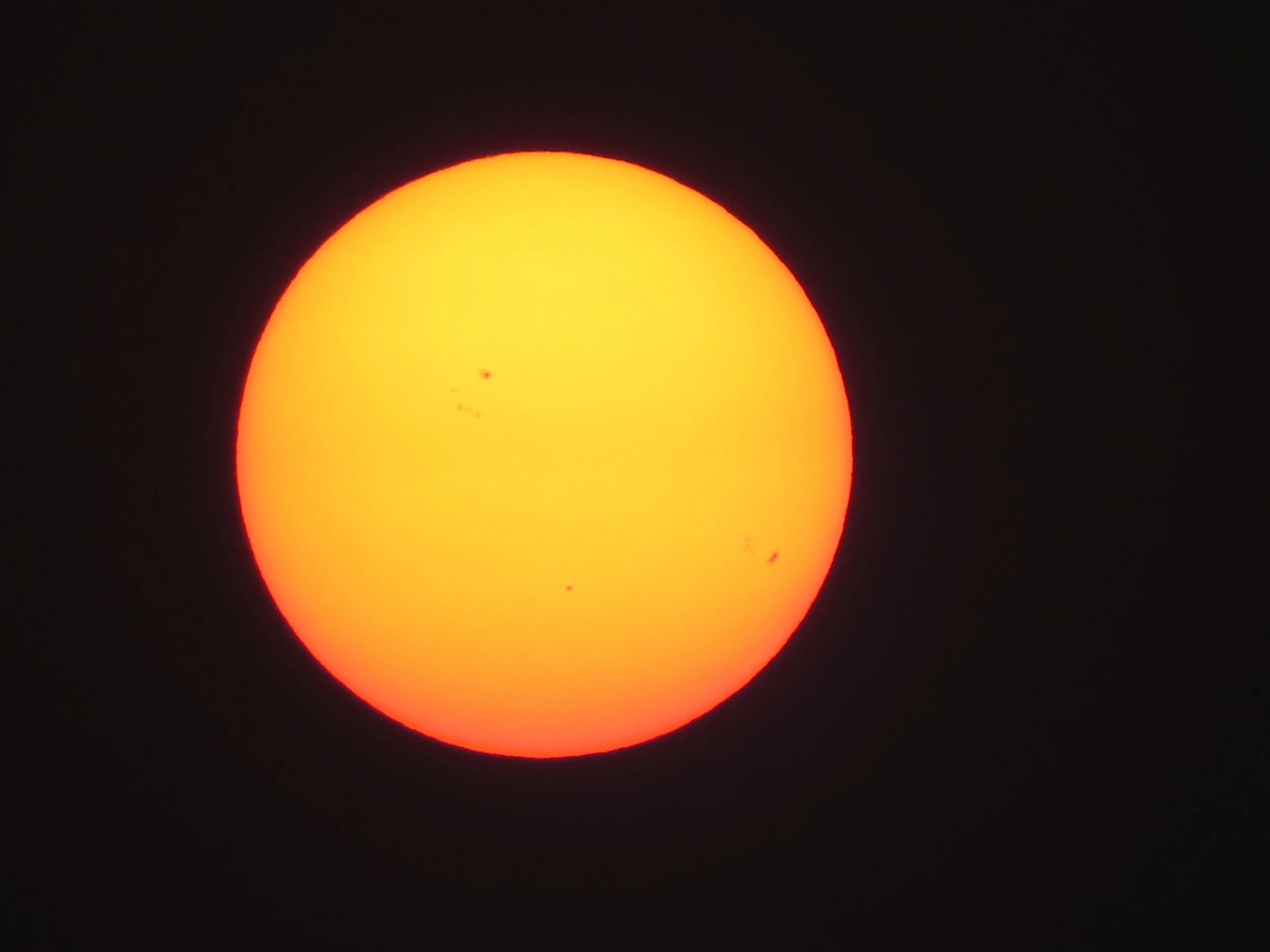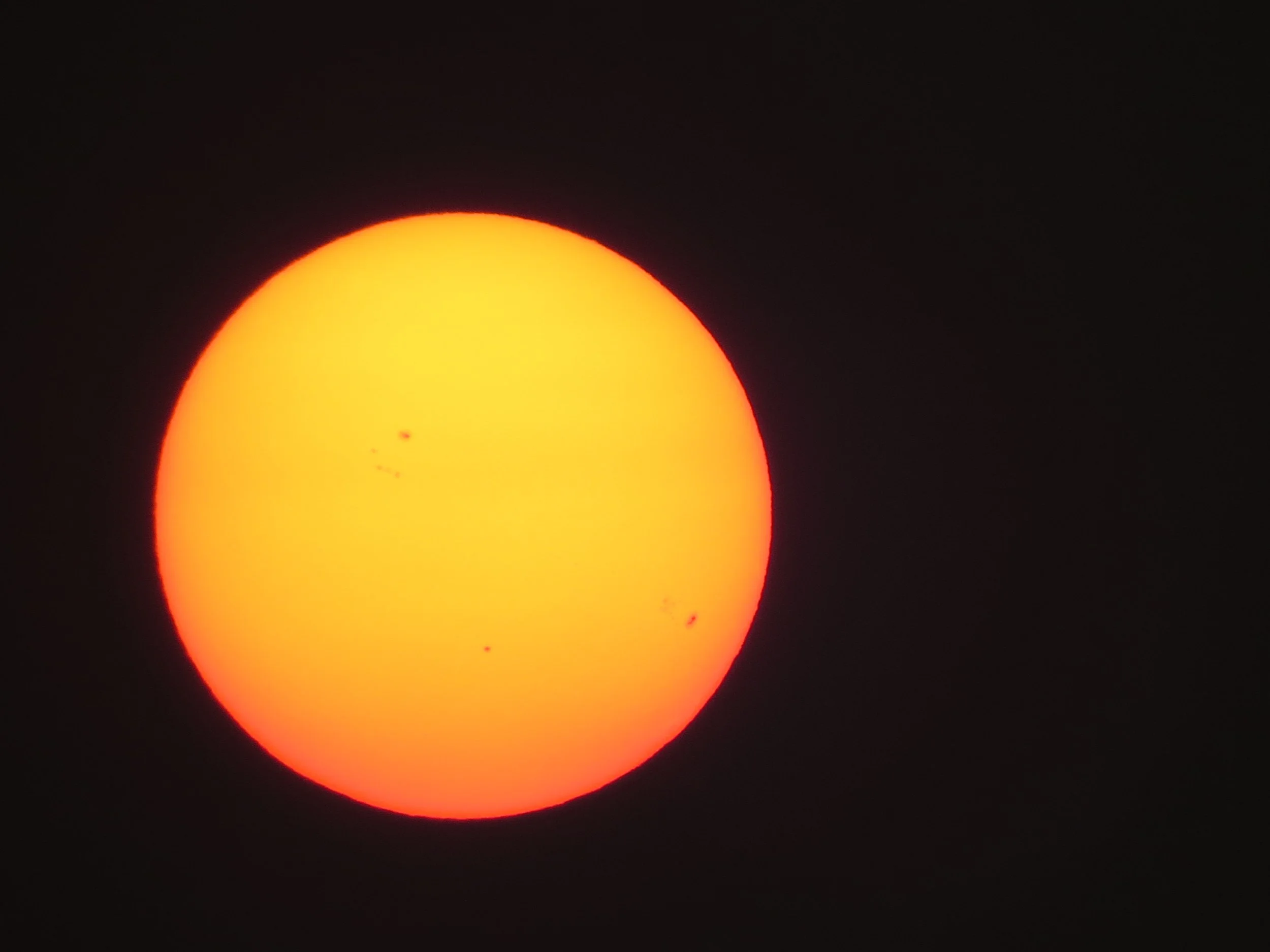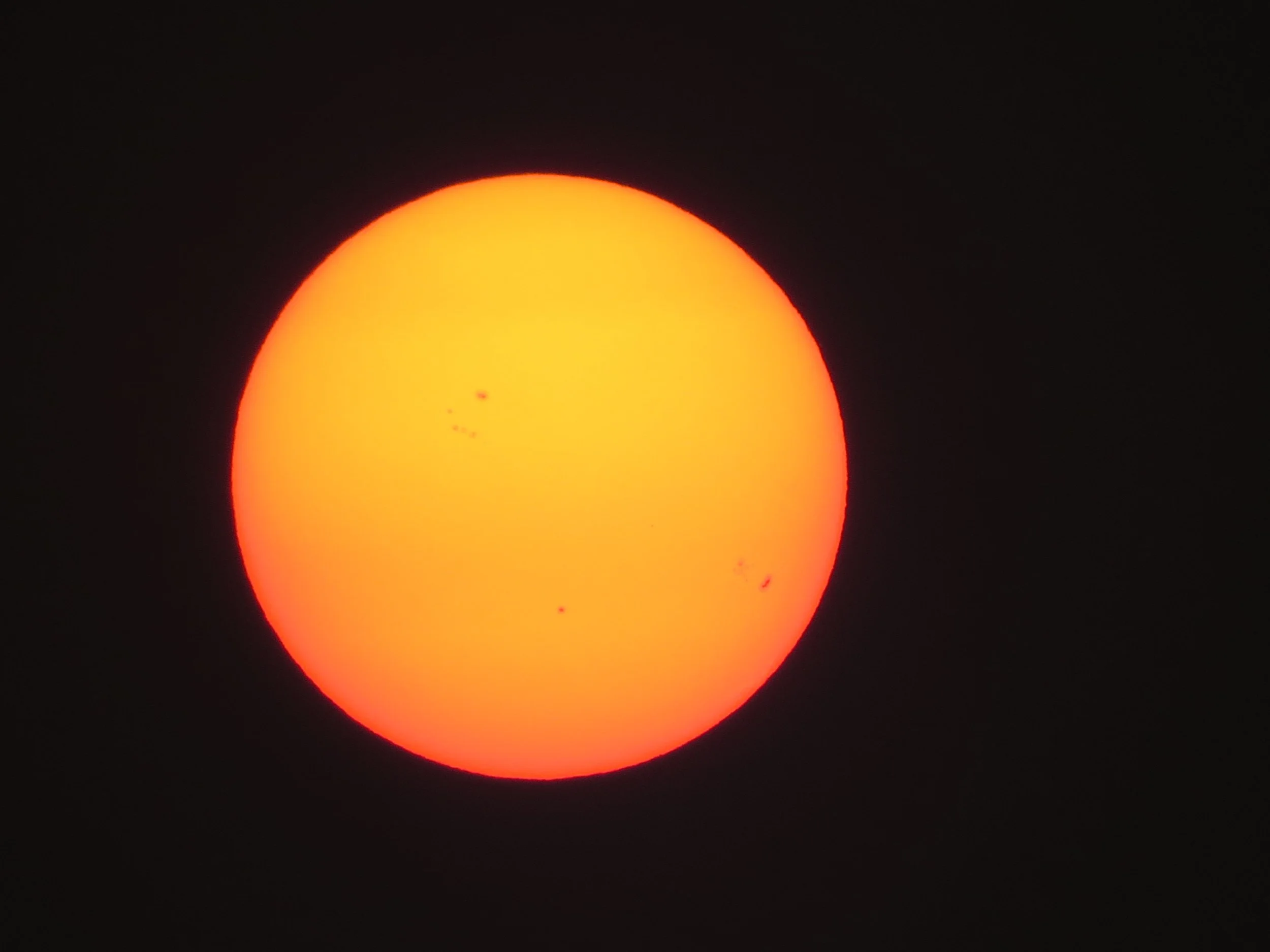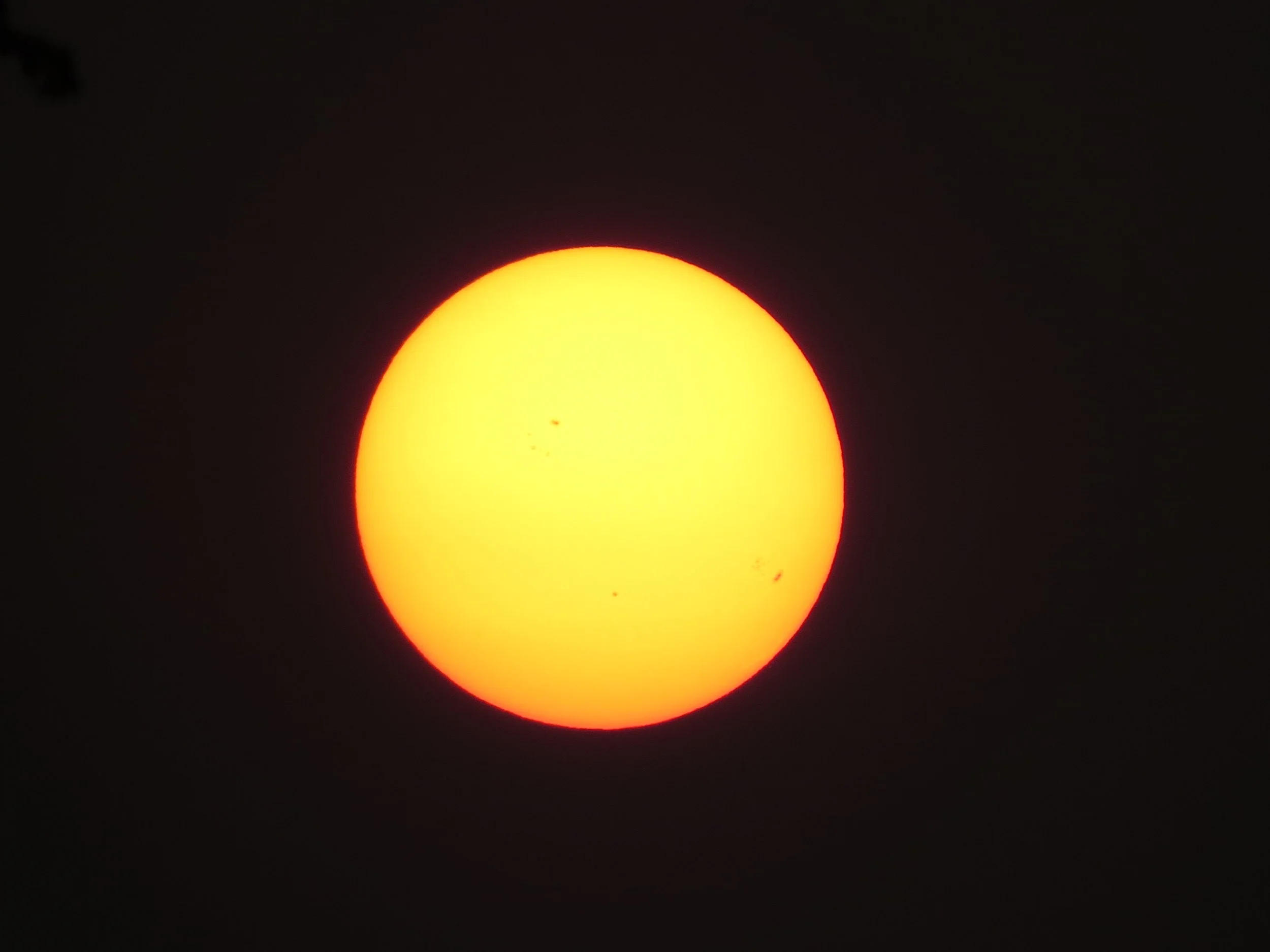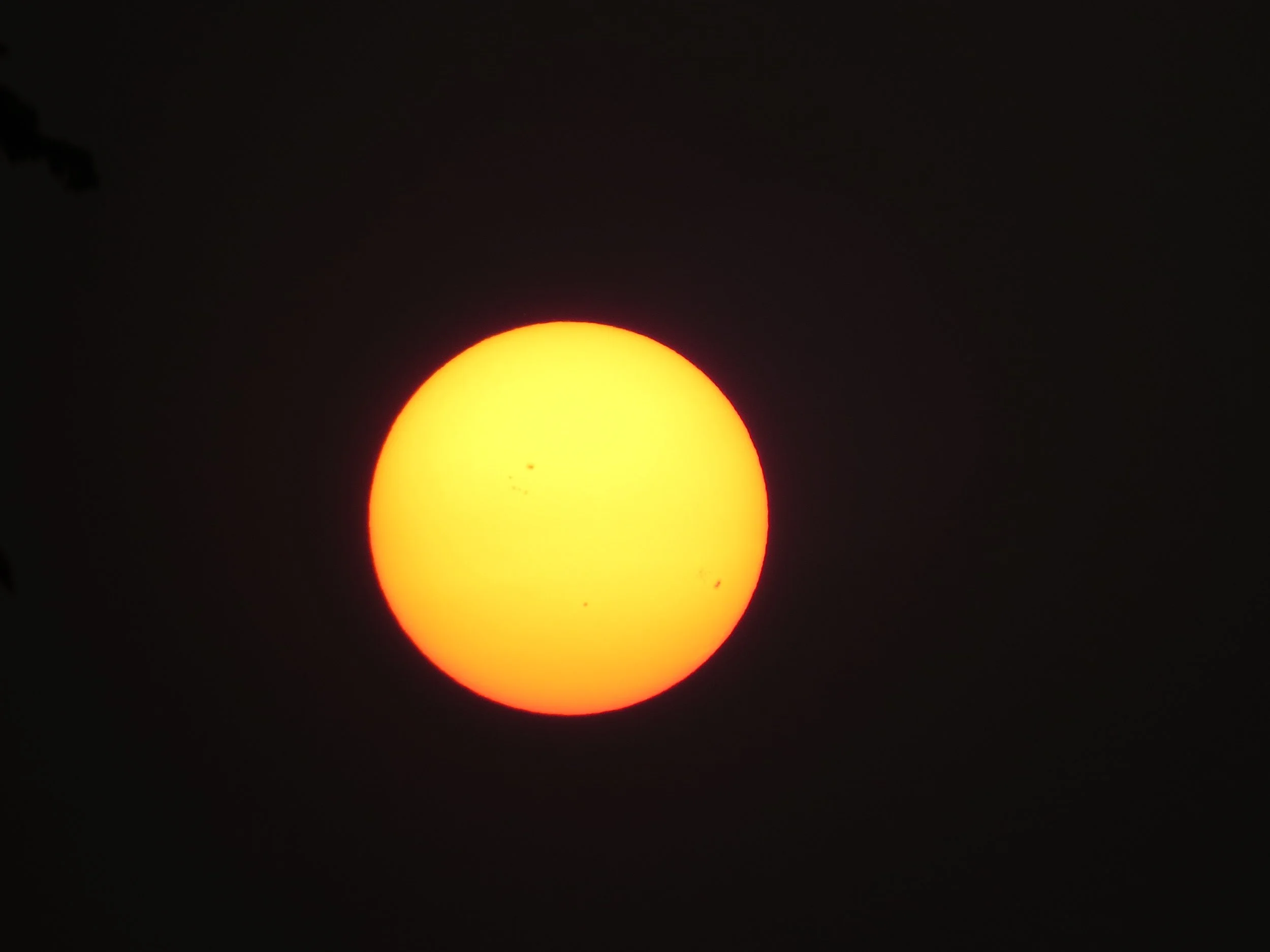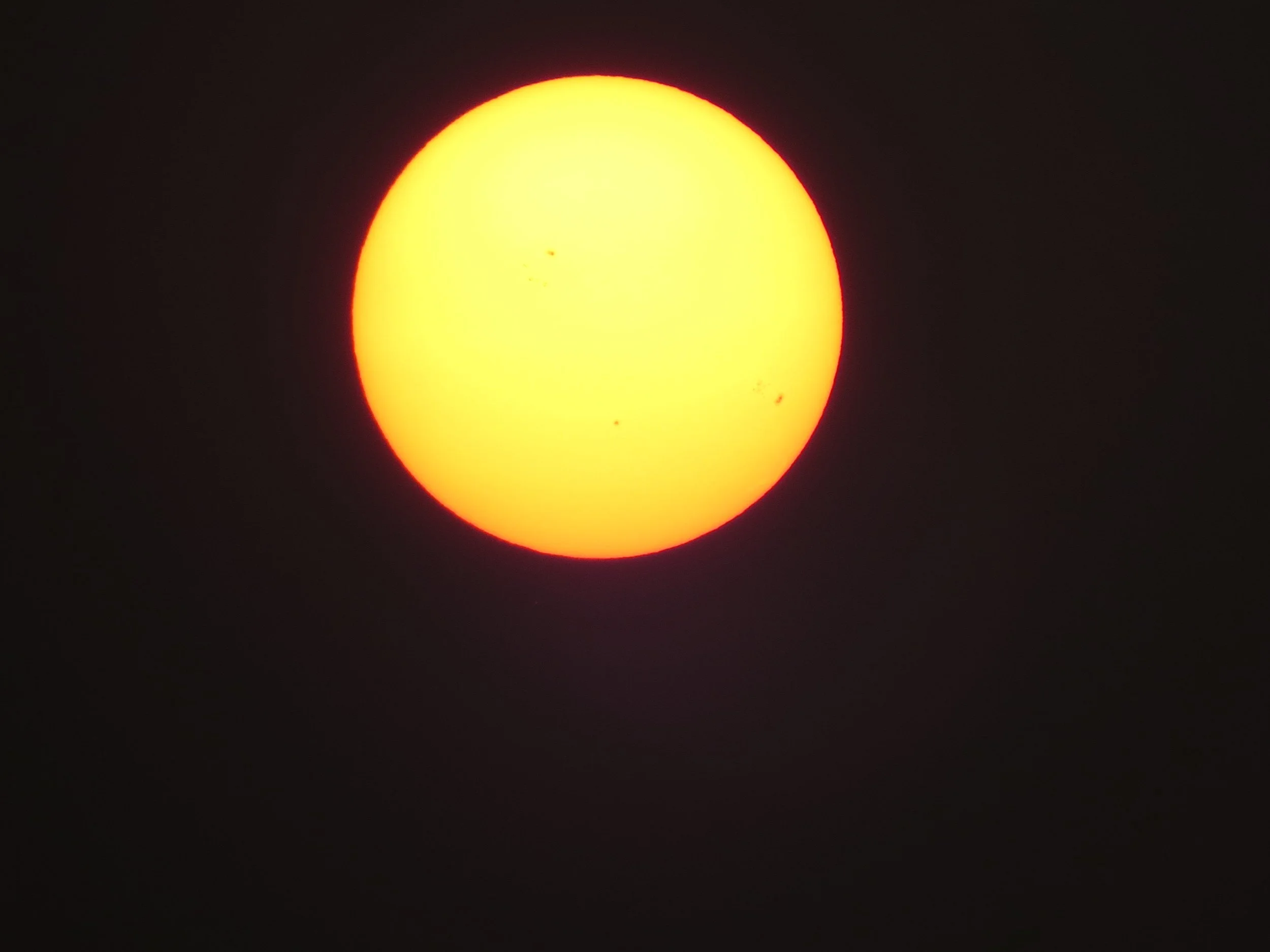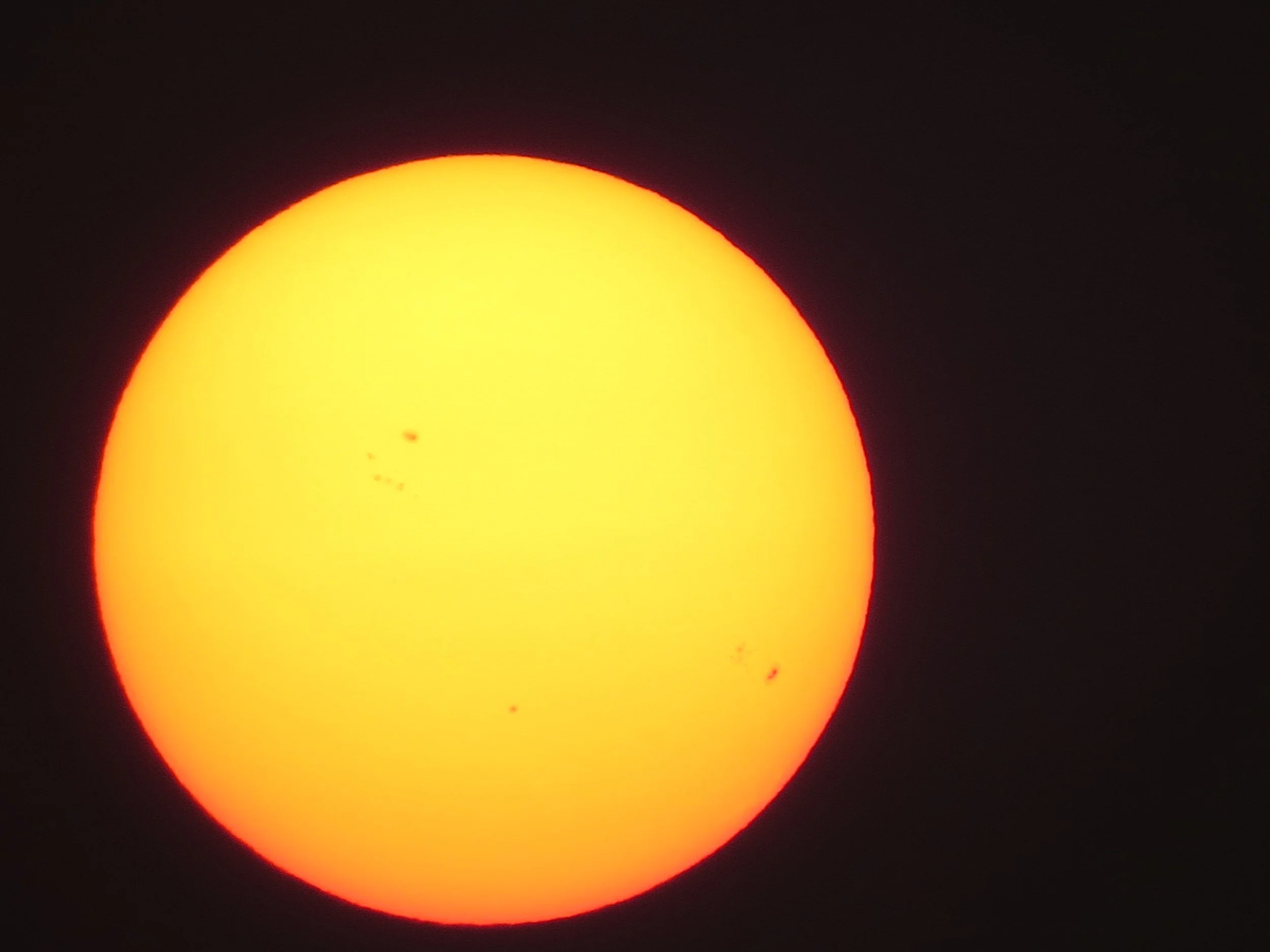This evening, the sun was unusually low and intensely bright as it set—appearing almost closer than normal. It stood out more vividly than on most days, possibly due to the haze in the atmosphere from smog or the forest fire smoke drifting down from up north. Whatever the reason, it felt like a moment worth capturing, so I grabbed my camera.
I don’t have many photos of the sun in my collection, and this one turned out to be particularly unique. While focusing the shot, I noticed small spots and dark patches across the surface. At first, I assumed my lens might be dirty, but it wasn’t. That’s when I realized I was actually seeing sunspots.
Sunspots are temporary dark regions on the Sun’s surface, appearing darker only because they’re cooler than the areas around them. They’re caused by intense magnetic activity—places where the Sun’s magnetic field lines pierce through the surface.
Even though they look dark, sunspots are still blisteringly hot—around 6,500°F (3,500°C)—while the surrounding surface is even hotter, closer to 10,000°F (5,500°C).
The number of visible sunspots changes over an 11-year cycle, alternating between periods of high activity (solar maximum) and quieter phases (solar minimum). Scientists monitor sunspots to track this cycle and predict solar activity.
Tonight, I just happened to catch a glimpse of that process in real time.





